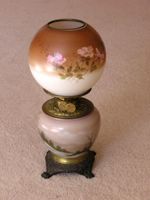At dusk, on July 3rd, between 9:15 pm and about 9:30 pm, 21 Evening Primrose blossoms opened in our garden. They are definitely unique flowers. The buds, when ready, pop
open around sunset. They unfold like little umbrellas. Sometimes in less than one
minute they will go from being tightly curled in their green sheaths to
opening fully as they appear above. The flowers must be
photographed by flash, because the next morning, as
soon as the sun hits the blossoms, they begin
to wilt.
This closeup gives you an idea of what the flowers actually look like after they have
opened. Some appear to be a little damp. That's because a few raindrops were
falling as I snapped the pic. Near the top of the photo are rather long
green spikes. These are buds, a few of which will open soon. Other,
smaller ones, will be ready in a week or so. It is hard to believe
that those spikes can open and unfold into such beautiful
yellow flowers in only a minute or two, once the
sun begins to set. At the back of the yellow
petals you can see the green sheaths
which folded out of the way just
moments before the
blossoms opened.

These photos were snapped about 9:20 p.m., July 4th. Here you can actually
see how rapidly the flowers open. On the right are three buds which are definitely
not ready to open. You can always tell which ones are
going to pop, because the sheaths start to split
some time after supper and reveal the yellow
petals they've been hiding. If you count the
number of buds which look like this one,
you can tell how many blossoms
will open at twilight.
Suddenly, around sunset, a portion of the sheath folds back toward the stem
and a petal starts to unwind. Here, the first petal is
beginning to emerge from its once tightly
cramped hiding place.

Just a few moments later, more petals are beginning to emerge as
the blossom definitely starts to open.
Often, within only a minute, the last of the sheath sections
pulls away and all the petals emerge.

In almost no time, there is a wide open flower. You will note
that the petals' edges are still slightly bent. These will
straighten out in a few minutes after the rather
moist blossom has a chance to dry. It
takes between 45 seconds to about
three minutes for a blossom to go
from the way it appears in the
3rd photo until the flower is
in full bloom. Watching
the performance is
much like viewing
a live, slow
motion
movie.
 Here is the Burning Bush at the rear of the yard. We could see it while enjoying our noontime meal on our solar heated glassed in porch.
Here is the Burning Bush at the rear of the yard. We could see it while enjoying our noontime meal on our solar heated glassed in porch.























